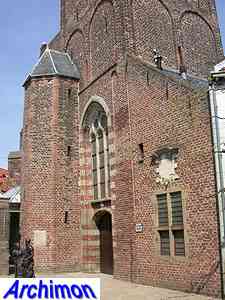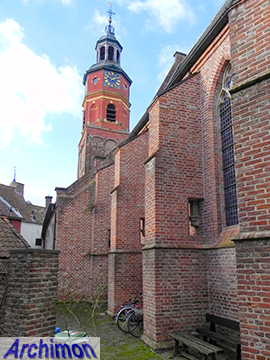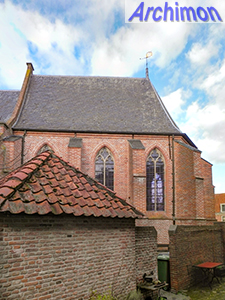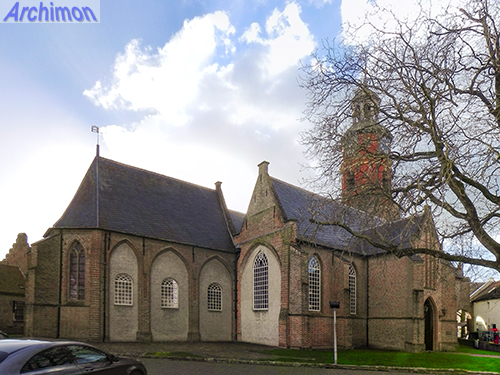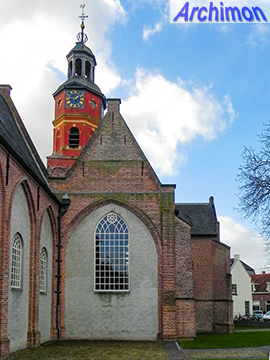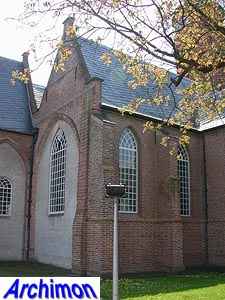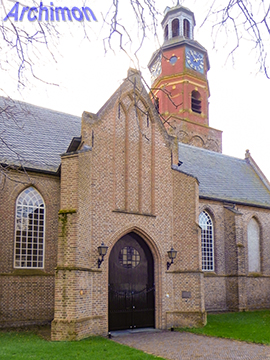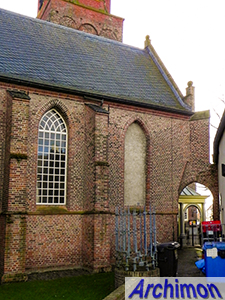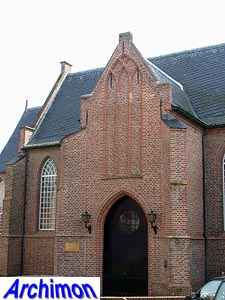
Buren (G): reformed St. Lambertuskerk
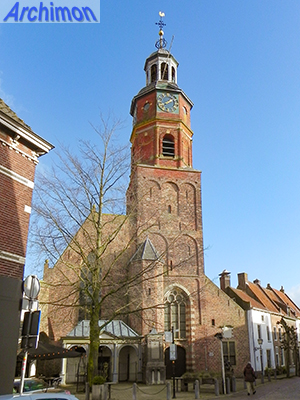
The origins of the church of Buren are older than the town itself. In ca. 1250 a chapel was built which after 1367 was replaced by a bigger one, which in 1395 was elevated to a parish church, as part of the plan the lord of Buren had to build a new town in between his castle and the river Korne. With the church at its center the new town was planned and built and fortified with walls.
The church at that time was largely as it is now. The oldest part, the tower, dates from the mid-14th century. A stair-turret was added in c. 1500. The nave and side-aisles date from the second half of the 14th century. The northern aisle is the same height as the nave, while the southern aisle is much lower and not as wide. The northern aisle has a portal which dates from the mid-15th century.
In the first quarter of the 15th century a double choir was built, the northern part of which was destroyed by fire in 1575. The remains were demolished in 1733. Underneath the choir is the family vault of the counts of Buren.
The two octagonal tower segments are obviously later additions. The first of these two was added by Italian architect Alexander Pasqualini, who lived in Buren between 1543 until 1548 in the service of Floris van Egmond, lord of Buren, Ijsselstein and Grave. His contribution to the church tower is a rare example of true Renaissance architecture in the Netherlands, although it's modest compared to the entire church tower he built in Ijsselstein earlier. An old, undated but detailed drawing suggests the octagonal segment was part of something a little bigger and had on top of it a, what appears to be, round tower segment with a short conical spire, both in a bad state.
These parts obviously were replaced by the current upper tower segment. Although a good match for Paqualini's part shape-wise, it is in Classical style, with tympanums on four sides of its dome-shaped roof and an open lantern on top. It was added in 1661-1662 to a design by Pieter Post, one of the most important architects of 17th-century Classicism. By that time the county of Buren was a personal possession of the Orange-Nassau family, rulers of the Republic. This connection began in 1551 with the wedding in the church of Anna van Egmond, the daughter of the count, and prince Willem van Oranje, who by this marriage became the richest and most powerful nobleman in the Netherlands. Two decades later he would lead the revolt against the king of Spain and make calvinism the ruling religion. Of course at the time of the wedding the church was still catholic. By the late 1570's the church had become a protestant one.
In the next centuries several changes were made to the church, such as smaller windows replacing the large Gothic ones. In 1742 the interior was covered with wooden barrell vaults. In the 19th century the outside walls was covered with a coat of plaster. At some point the portal at the north side was bricked up. Between 1950 and 1980 three restorations gave it its current state.
Although the church came in protestant hands centuries ago, the name St. Lambertus is commonly used again since the 1970's.


